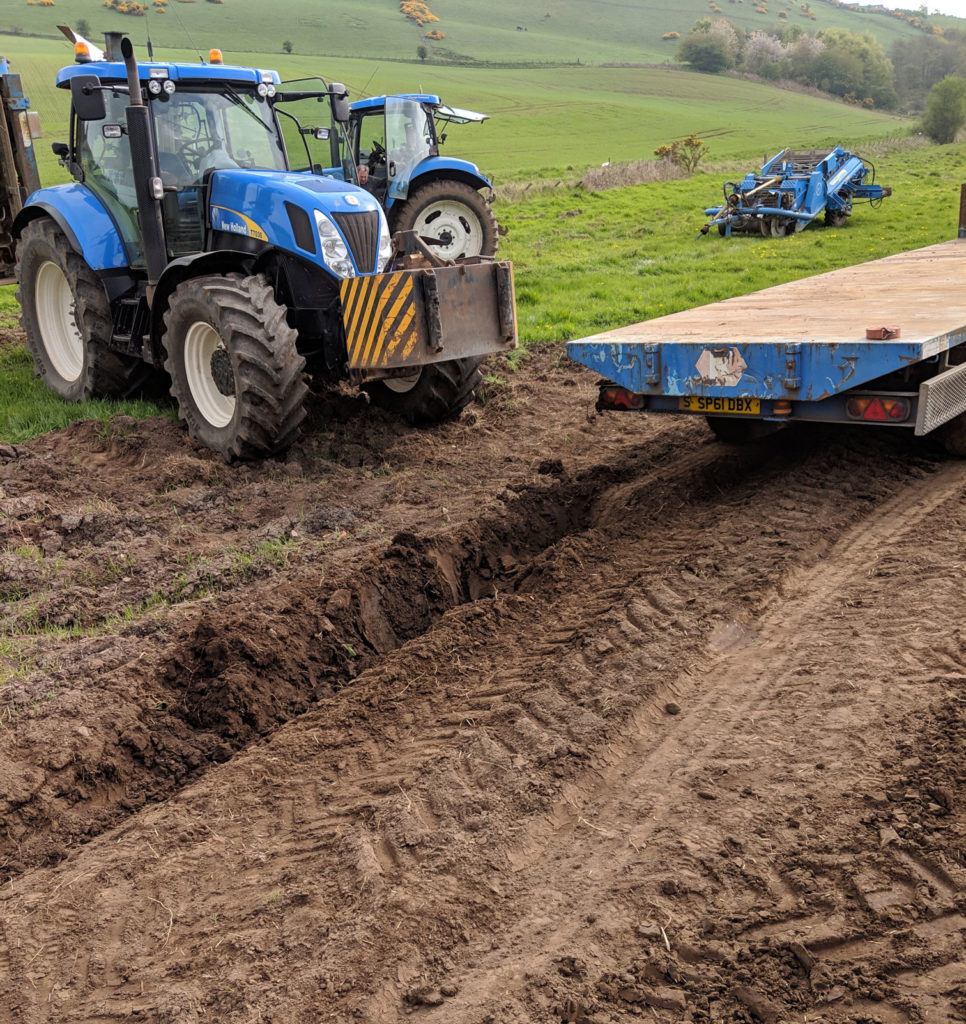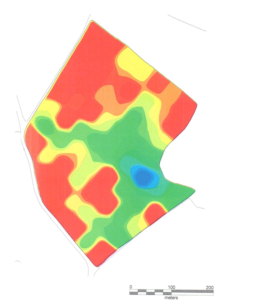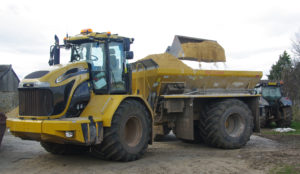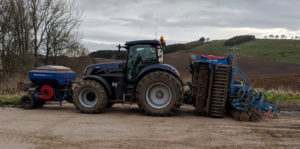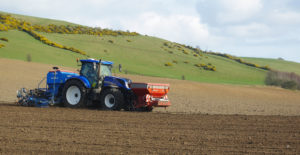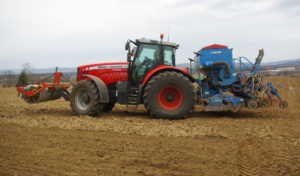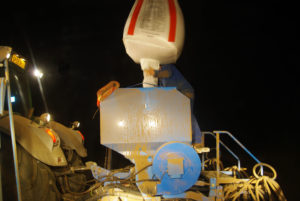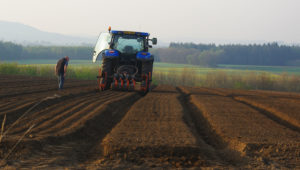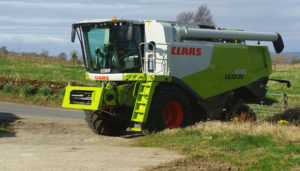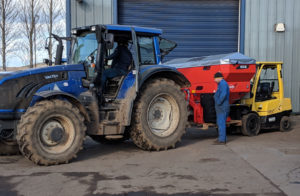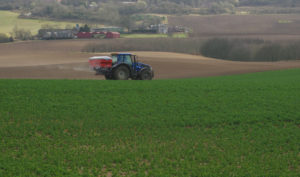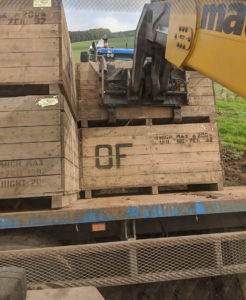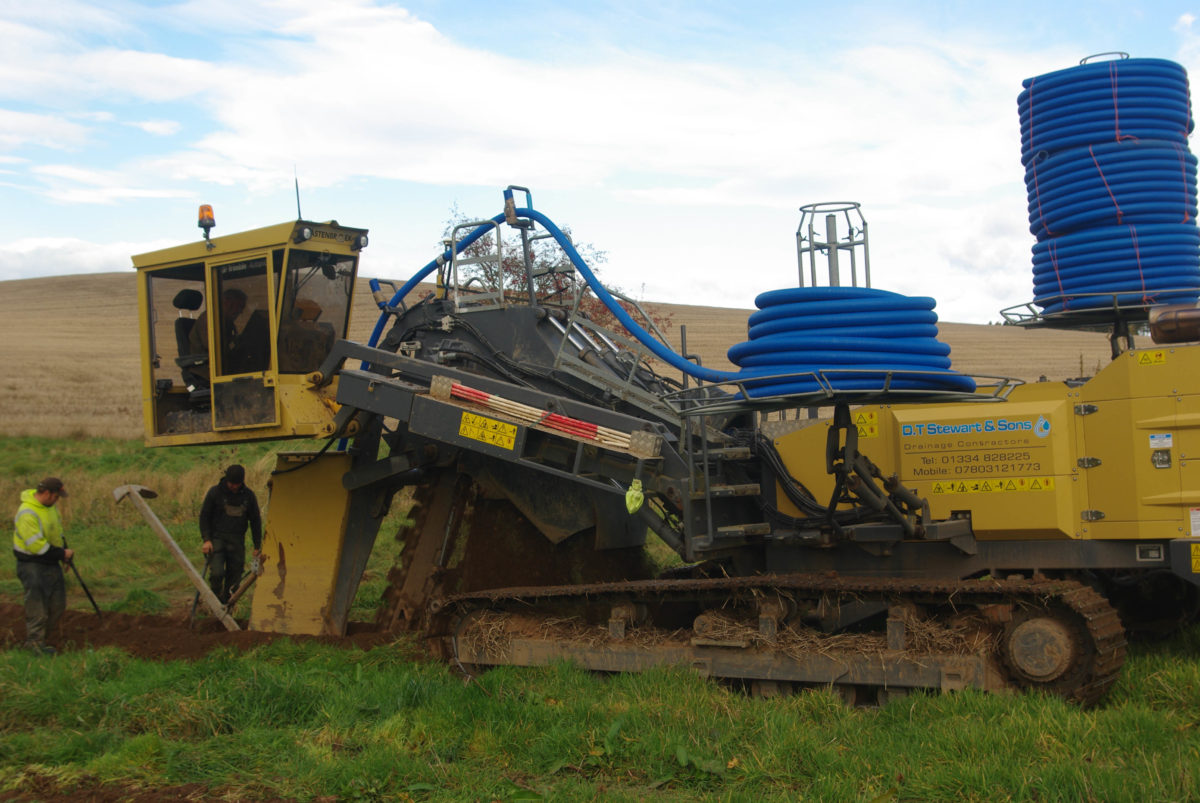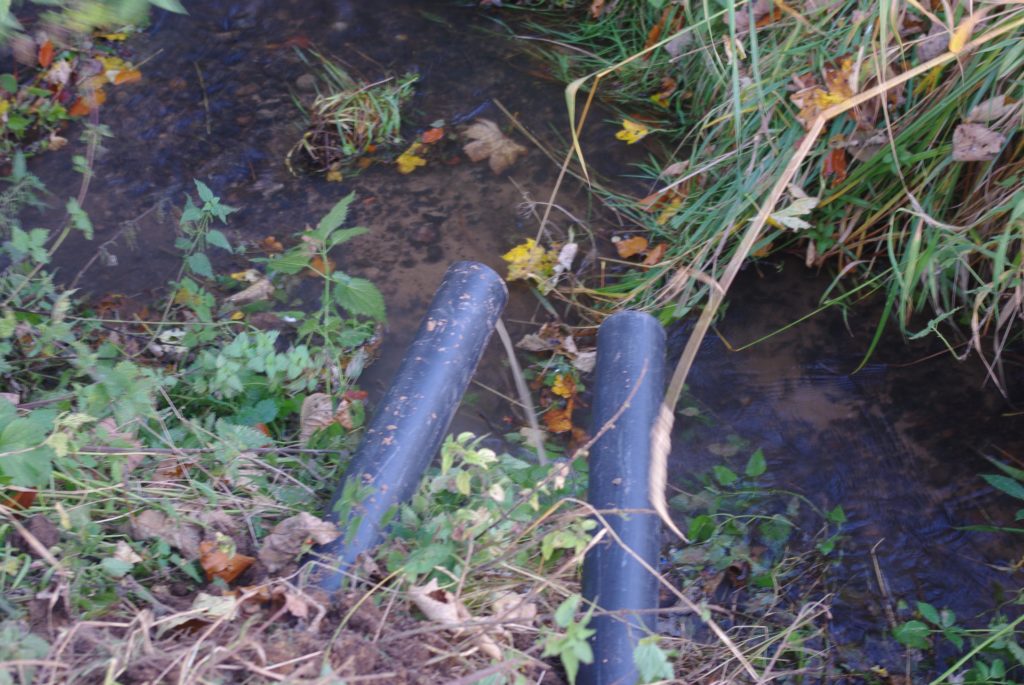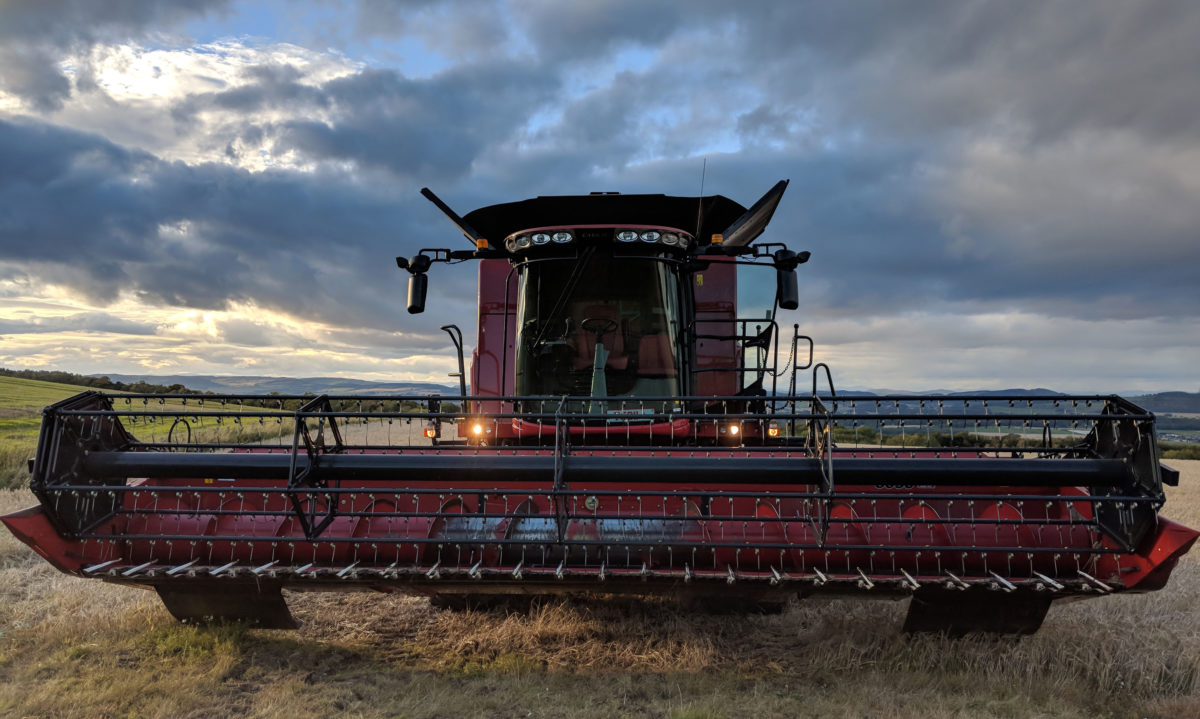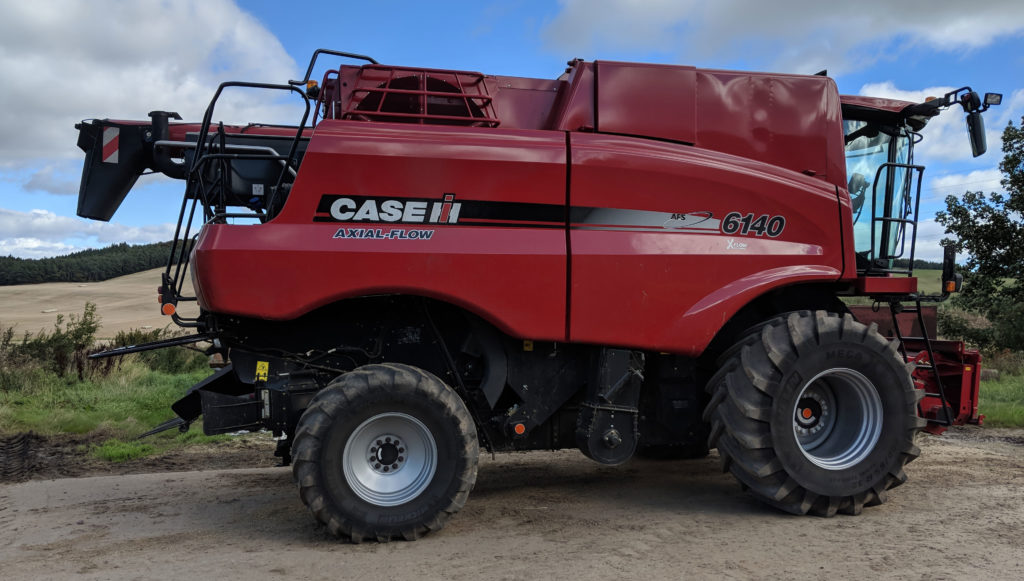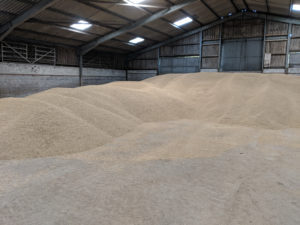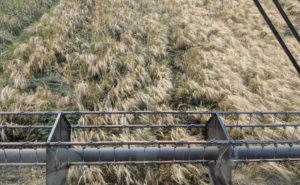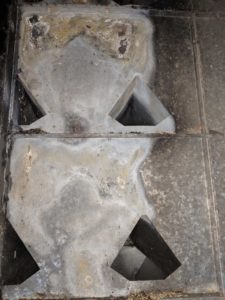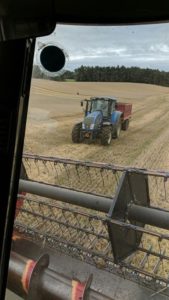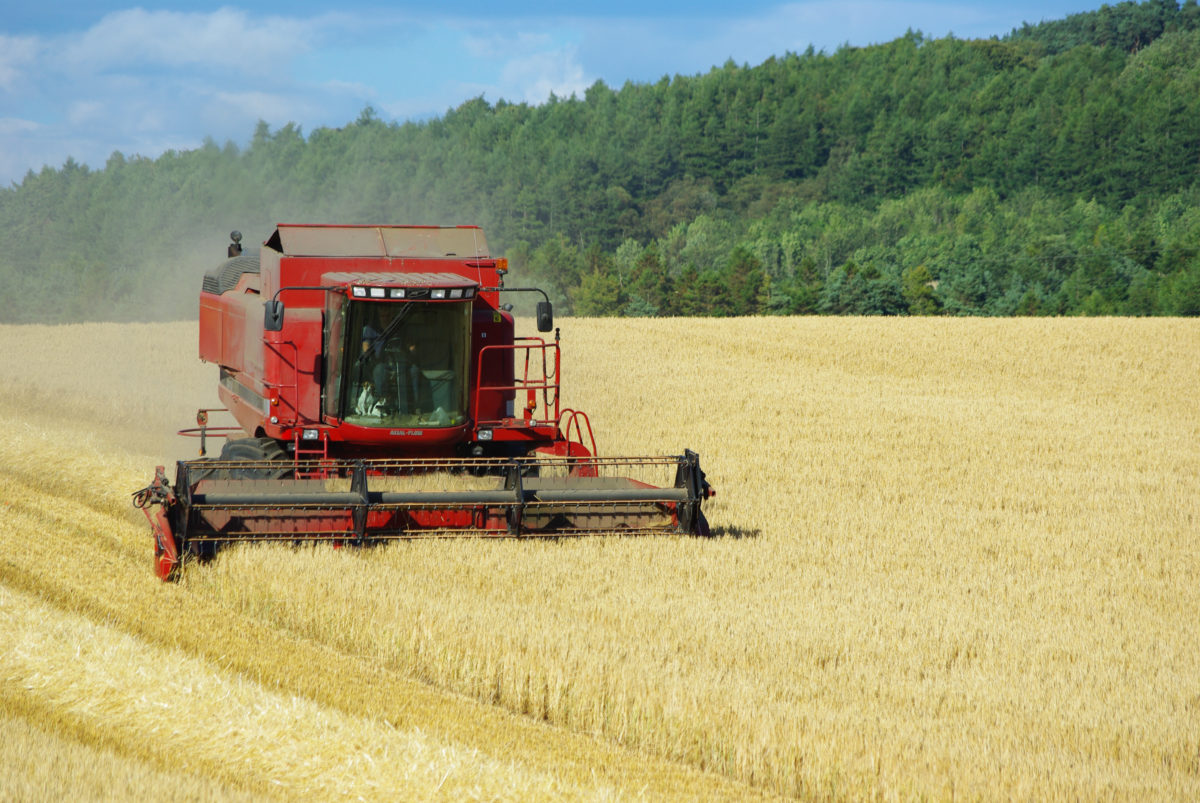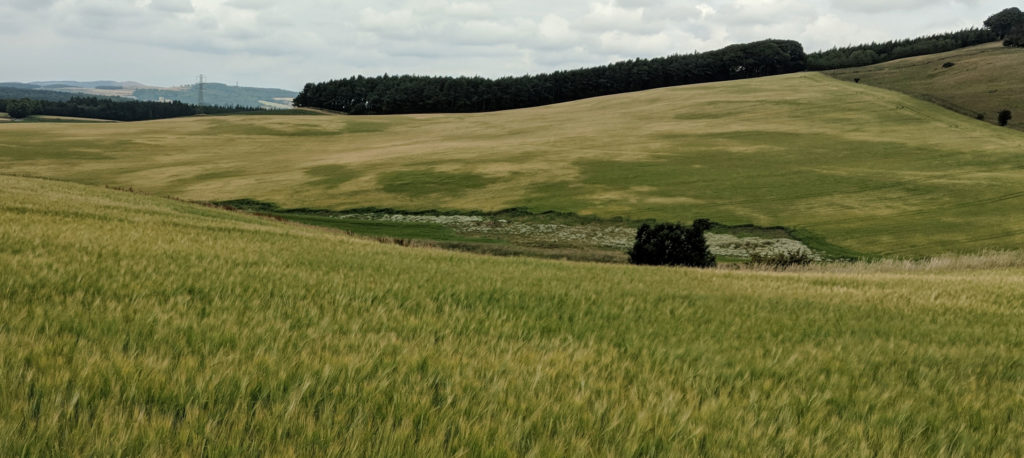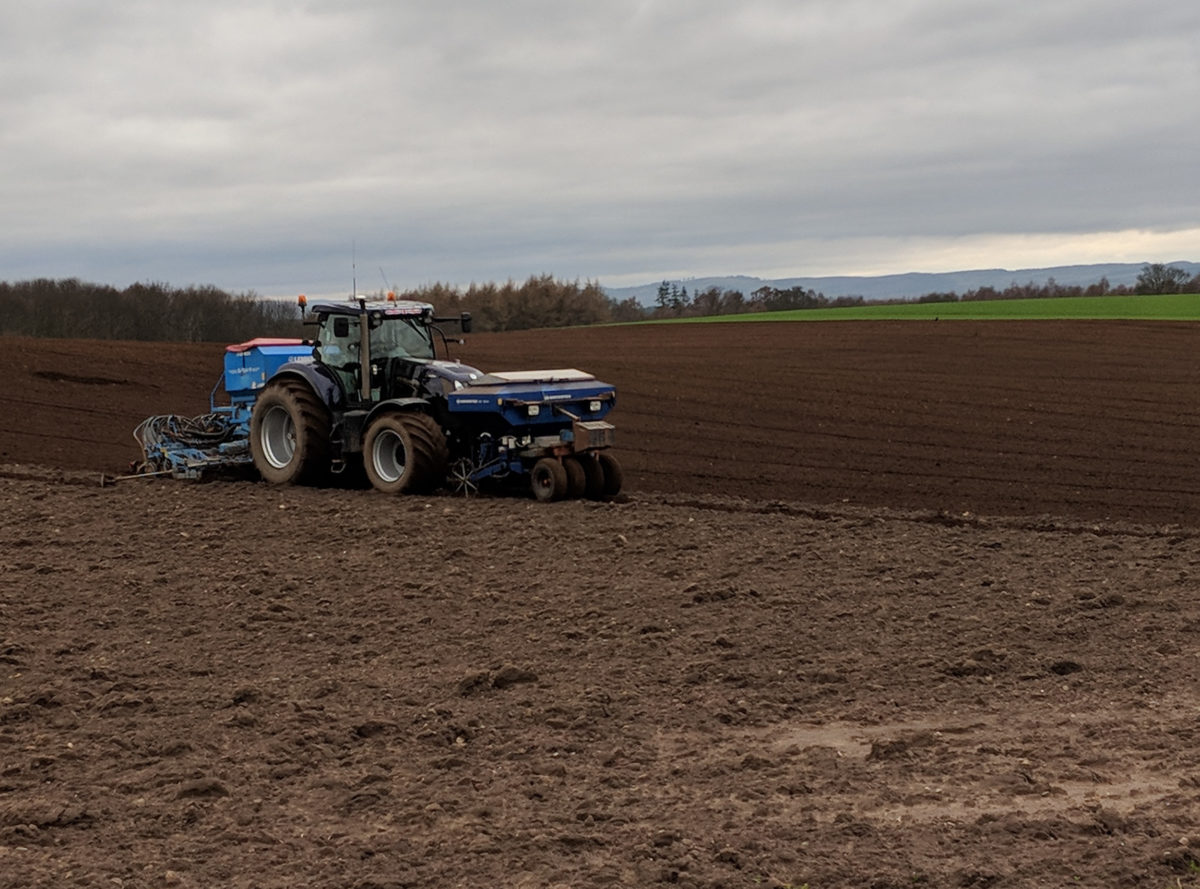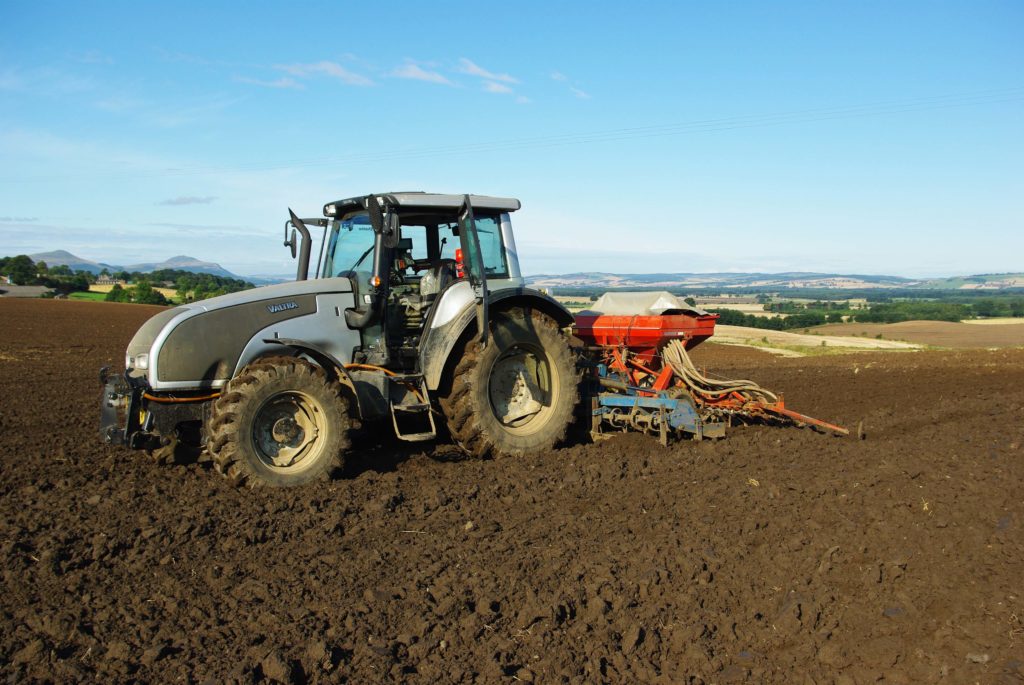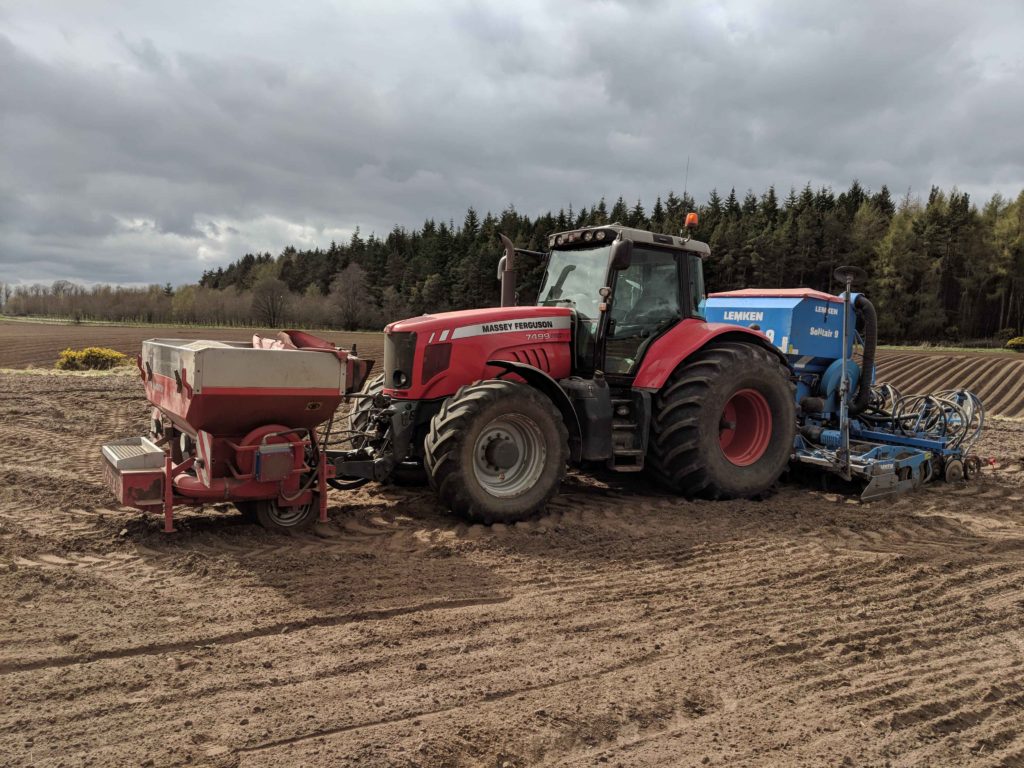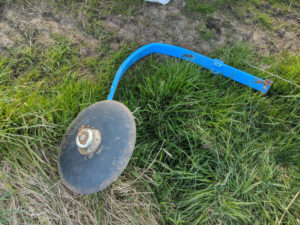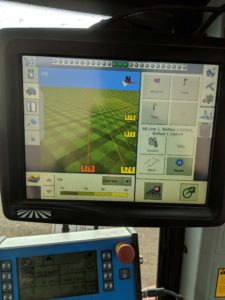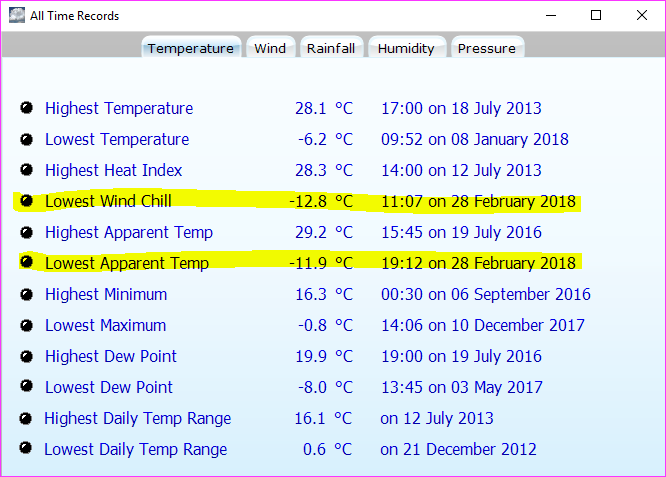It has been a fine change this year to have a season known as ‘Spring’. The more normal weather pattern in this neck of the woods is 7 months winter followed by 5 months of bad weather, however this year has been the exception that has proven the rule.
Last year we started drilling spring barley on the 18th of April. This year we were all finished by the 9th of April, and all going in to what must be the best seedbeds we’ve had in a while. Even the really poor bits are looking quite good as I write this.
Weather Report
So far this year has been very dry which is why we have been able to get on with the sowing so well. Up to last night, we have only had 103mm of rain all year. Compare that to January 2013 where we had 109mm in the one month and it puts things into perspective a bit. Now, I’m not unduly concerned at the moment, but the lack of rainfall could become a problem once the crops develop a canopy and start drawing lots of water.
One interesting fact this year has been the variation of rainfall within a short distance from Cults Farm. We have a Davis weather station, and one feature they offer is the ability to view other Davis stations in the area. There are two other stations within a 7 mile radius, both further west than we are. The below table shows the total rainfall for all 3 stations up to 29th April.
| Farm | Yearly rainfall to 29/04/19 |
|---|---|
| Cults | 103mm |
| Farm 1 (6 miles west) | 151mm |
| Farm 2 (7 miles north west) | 196mm |
I am hoping at some point to add live weather reports to the website, but have not been able to do it so far.
Lime and Soil pH
One of the important factors to get right when farming is the soil pH – in other words the acidity of the soil. Some crops (such as potatoes) prefer acid soils, but most like the pH to be just on the acidic side of neutral (a pH of around 6.2 – 6.5). To maintain the pH level of the soil we have to periodically apply lime, which is alkaline. Twenty or so years ago you would apply a blanket application of 2 tons/acre of calcium or magnesium lime, but things have come on a long way since then. When the fields are sampled the location of each sample point is recorded using GPS, so you can build a pH map of the soil in a field. We had two fields sampled this winter, the results of one are shown above:
A contractor is used to apply the lime to the fields, and he has a variable rate spreader that is also connected to GPS. As he drives over the field, the spreader automatically varies the rate of application, so the areas of low pH get more, and some areas will get none at all. The lime spreader is not a small piece of kit, and most things get out of its way when encountering it on the road (click on the image to see a larger version).
We try to sample 2 or 3 fields a year, which means we get round the farm every 5 – 7 years. Because the farm sits on a lot of limestone seams there are some fields that never need any lime. Lime was mined in the area up until about 20 years ago, when it became uneconomic to do so.
Spring Barley Drilling
We started drilling on 15th March on the lighter sandy soils at the north end of the farm. Drilling was in 3 phases, and we had 4 different grain drills in at various times.
Euan came in first with a 4m power harrow drill, and drilled just over 40 hectares.
He then went away for a few days to somewhere else, before reappearing the next week with a different 4m power harrow drill. This time he drilled 60 hectares, and that was the last we saw of him.
The drilling was finished off by Iain with a 6m power harrow drill, which you can see working in the feature picture of the post. This picture shows it in the transport position down at the farm.
He was joined by Derek who was learning with a 3m power harrow drill. Both the 4m and 6m drills have the fertiliser hopper on the front. Fertiliser is blown back to the coulters where it is placed in the ground. The 3m drill has a split hopper at the back, one half for fertiliser, one for seed. The press on the front of the tractor with the 3m drill is to consolidate the ground in between the tractor wheels.
It was my job to keep them both going in seed and fertiliser, and I was not hanging about much! 🙂 Because there was a bit of pressure on, we were working a couple of late nights. Between them they covered the remaining 46 hectares.
We are growing 2 varieties of spring barley this year: Diablo and Laureate. Both are malting varieties being grown for East of Scotland Farmers.
Carrots & Potatoes
The carrots have been drilled for a week or so now, and like the spring barley they went in in excellent conditions. Carrots have to be planted with equal spacings between the plants, so a drill known as a precision drill is used. It can be seen working here.
As I write, the potatoes are being planted. These are being grown for seed again, though not by us.
The full cropping plan for Cults Farm for this year is shown in the table below:
| Crop | Area (hectares) |
|---|---|
| Winter Barley | 26.5 |
| Winter Oilseed Rape | 14.75 |
| Winter Wheat | 10.5 |
| Spring Barley | 144 |
| Potatoes | 18.5 |
| Carrots | 9.5 |
A Plague of Moths
Earlier on in the year we experienced a highly unusual plague of moths at the farm. There were two hatchings, one about the turn of the year, and the other in early spring. Now, to put you in the picture, I am a farmer from Fife in Scotland. This means that I don’t like spending money (I dropped a £1 coin once, and it hit me on the back of the head as I bent down to pick it up). The moths appearance coincided with my wallet opening on at least 2 occasions over the winter.
The first was for the purchase of a second hand combine harvester. Regular followers of my blog will know that I have talked about changing the combine for a couple of years. After much thought I purchased a Claas Lexion 630 combine. This is a change of make for us, so it will be interesting to see how we get on. It has been sneaked onto the farm and is currently hidden in a shed.
The second was the purchase of a fertiliser spreader in early spring, as the one we had was done. Again we have changed make, but this was at least partly because of looking to the future. I have talked about using GPS on the farm but so far we have not gone down that route.
The new combine is fitted with a weigher that will allow us to produce yield maps of fields in the future should we wish to do so. Likewise, the fertiliser spreader is equipped much like the lime spreader shown above, in that it will allow us to apply variable rate fertiliser applications in the future. In both cases there is considerably more expense required to be able to do it, but at least we are getting ready for it.
… and Finally
Even in a dry year like this there are wet holes on Cults Farm. I received a call for help this morning as a trailer load of seed potatoes had got stuck down the bottom of the field where the tatties are going. He’d been a bit unlucky to be fair, as it wasn’t obvious there was a wet patch.

There were 12 boxes of seed potatoes on it, together with 6 bags of fertiliser – about 15 tonnes in all. It was a delicate operation to get them all off without anything tipping over.
However, we got there in the end, and once the load was off the trailer managed to get out with no problem.
